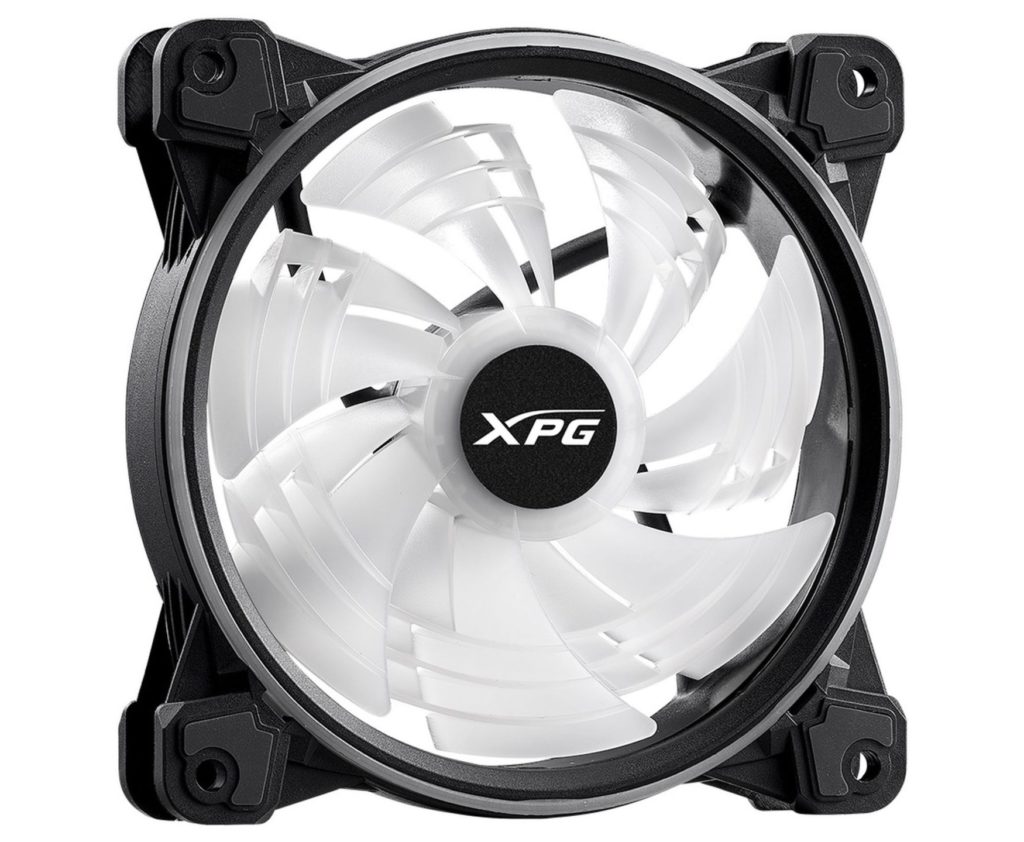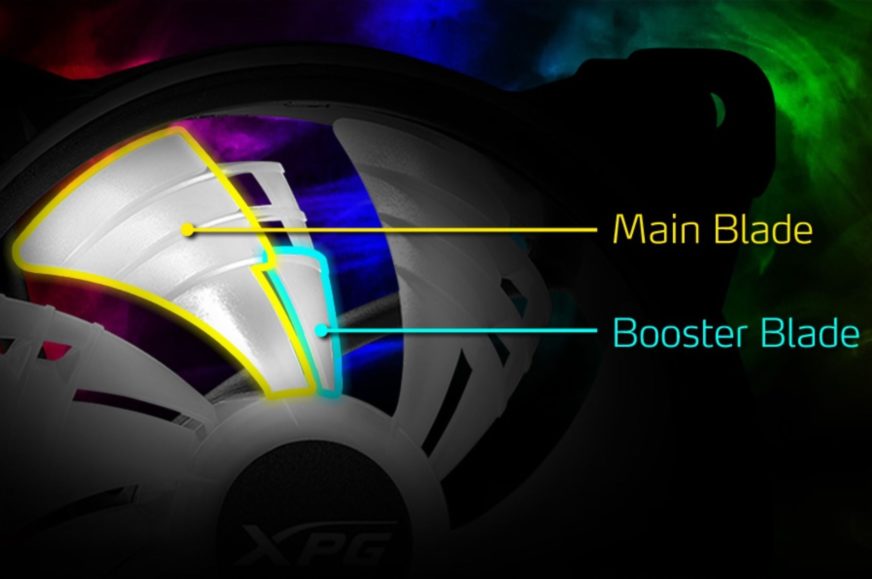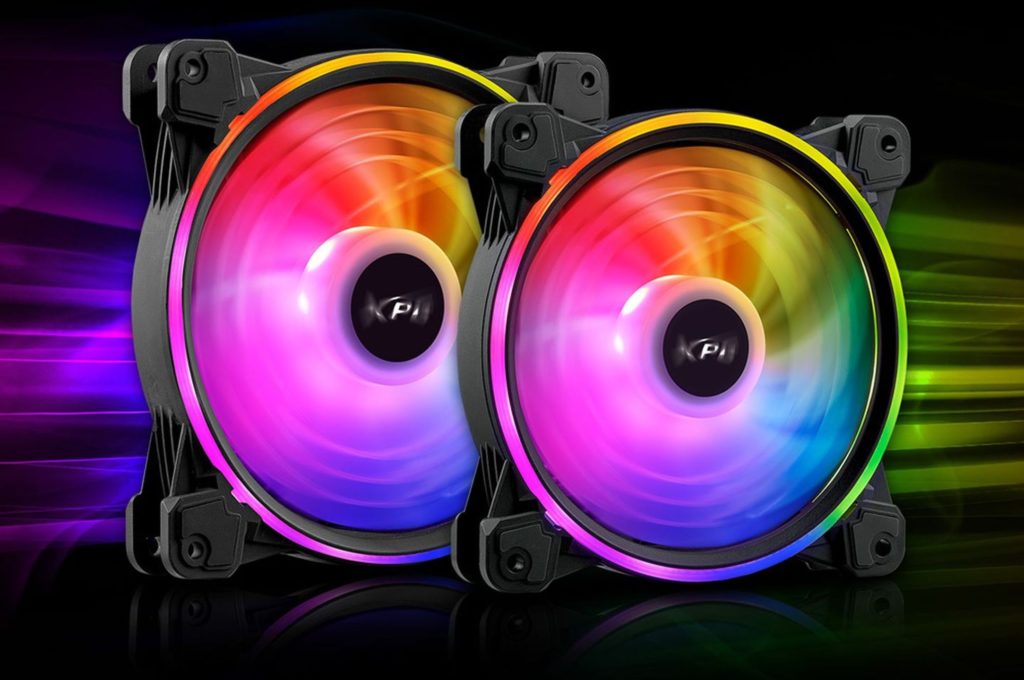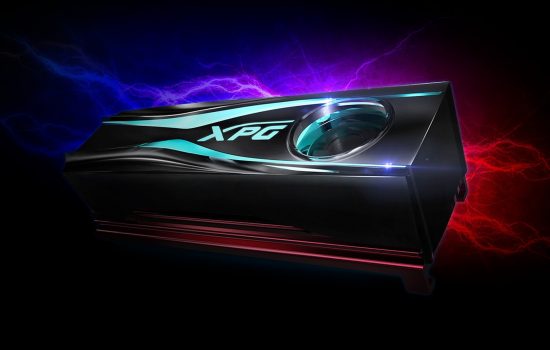Fans with racing aerodynamics
These are truly unconventional fans. While the rotor shapes tend to vary across different models, in different materials, the XPG Hurricane design clearly stands out among the rest. They have sort of dual blades and prominent protrusions and, imagine, some sort of openings as well. Overall, the shape of the blades is more complex and it is not a typical quadrilateral geometry either. How can this possibly work?
The only thing traditional about the new Adata XPG Storm fans is perhaps the format (120 or 140 mm with a normal thickness of 25 mm) and the spacing of the mounting holes. Everything else makes these fans more or less stand out from competing designs.
The marketing materials highlight the twin-bladed rotor design in particular. The second, smaller blade was created by an air gap on the side closer to the motor and a small increase in angle. There are also such windows in the other half, again closer to the stator frame. That’s on the exhaust side, where the back of the blade is also raised and resembles the rear wing (spoiler) on sports cars.
The air is guided to this wing in wider grooves. These can be useful to partially separate unwanted turbulence at the intake and also eliminate air sliding down the length of the blades. Of course, with this design, Adata points out that the individual modifications reduce air resistance, which naturally reduces noise, which of course makes sense.

With fans, however, the air work is a bit different than with formulas. Aside from the strength of the material used, holes in the blade can reduce the efficiency of XPG Hurricane fans. This is the space through which air escapes and it’s a bit like the holes in a sailboat or balloon, which has a negative impact on static pressure and indeed Adata only states 1.42 mm H2O, which at 2000 rpm is really low.
Overall the full area of the blades is quite small, for only seven of them, and the gaps between them are again quite large, and when you factor in the leaky shroud, they’re probably not going to be very efficient fans for cooler heatsinks. This is because, among other things, the outside of the stator frame is circular as well. Similar to BeQuiet! Silent Wings (Pro) 4 fans with standard corners. A gap is created between the frame and the radiators and in turn this is the space through which static pressure drops in the cooling system. You already know that this can have an impact on airflow from these tests. In a non-restrictive environment, however, it could be an effective fan.
The reported airflow is up to 104.5 m3/h, and this is at a standard-low noise level according to the specifications. That means that in certain circumstances there is the promise of very good performance in a case where the fan does not have to overcome a significant obstacle. Thus, typically in an environment without a dust filter and preferably without a grille, or if so, with a circular grille made of rounded wire.
The fans are already available in shops in two formats – 120 and 140 mm for prices around 20 EUR (the larger fan is usually more expensive by about a euro). ARGB LEDs are also included, which illuminate the entire rotor. For completeness it should be added that the fans have fluid (FDB) bearings and the mean time between failures is quoted at 230,000 hours. However, the warranty is only two years.
English translation and edit by Jozef Dudáš
- Contents
- Fans with racing aerodynamics











